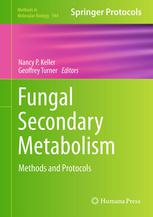

Most ebook files are in PDF format, so you can easily read them using various software such as Foxit Reader or directly on the Google Chrome browser.
Some ebook files are released by publishers in other formats such as .awz, .mobi, .epub, .fb2, etc. You may need to install specific software to read these formats on mobile/PC, such as Calibre.
Please read the tutorial at this link: https://ebookbell.com/faq
We offer FREE conversion to the popular formats you request; however, this may take some time. Therefore, right after payment, please email us, and we will try to provide the service as quickly as possible.
For some exceptional file formats or broken links (if any), please refrain from opening any disputes. Instead, email us first, and we will try to assist within a maximum of 6 hours.
EbookBell Team

4.4
72 reviewsFilamentous fungi have long been known for their ability to produce an enormous range of unusual chemical compounds known as secondary metabolites, many of which have potentially useful antibiotic or pharmacological properties. Recent focus on fungal genomics coupled with advances in detection and molecular manipulation techniques has galvanized a revitalization of this field. Fungal Secondary Metabolism: Methods and Protocols is aimed at providing the key methodologies currently in use and necessary for accessing and exploiting the natural product information provided by the genomes of this large and varied kingdom. Written by active researchers in the field, the chapters deal with all the steps necessary, from optimization of fungal culture conditions for metabolite production, through rapid genome sequencing and bioinformatics, and genetic manipulations for functional analysis, to detection and testing of metabolites. In addition, chapters on basic science address approaches to the genetic regulation, protein biochemistry, and cellular localization of the biosynthetic pathways. Written in the highly successful Methods in Molecular Biology™ series format, chapters include introductions to their respective topics, lists of the necessary materials and reagents, step-by-step, readily reproducible laboratory protocols, and tips on troubleshooting and avoiding known pitfalls.
Practical and hands-on, Fungal Secondary Metabolism: Methods and Protocols encourages new investigators to enter the field and expands upon the expertise and range of skills of those already researching fungal natural products.